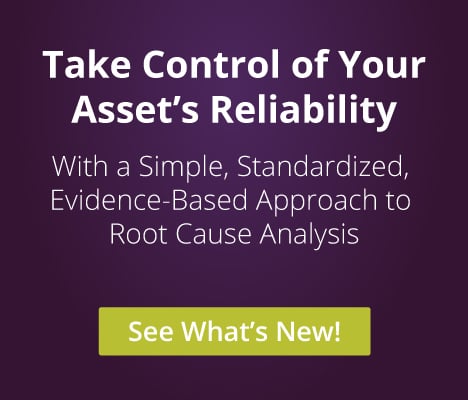Strategic Budgeting: The Key to Facility Management Success
Budgeting Strategies: A Recipe for Success
Like many of you, I have a budget to manage my personal life. The budget ensures I have the funds available to pay the mortgage, electricity, water, cable, and so on. I need to make sure I plan for these expenses so I have a good idea where my money is going.
I also know that I have some major expenses coming down the road in a few years that I need to start budgeting for.
For maintenance and engineering managers developing a budget for their departments, the process is similar. They need to zero in on the true cost of facility maintenance, the equipment that manages it, and future projects to improve performance, reliability and efficiency.
Looking Back
The first step is to look at historical data. For instance, I budget my electric and gas bills because over the previous 13 months, the utility company determined my monthly usage. Now I can make equal payments throughout the year. When I lived in New York, I occasionally experienced major shock in January or February when the heating bill came and it was four or five times higher than expected. Who knew the average temperature for a month could be 10 degrees?
The situation is the same for managers, who need to estimate monthly expenses based on historical routine maintenance data and labor costs. Unexpected maintenance activities occur, so the key to successful budgeting lies in reacting effectively to those surprises and managing them successfully. When managers encounter those unexpected surprises, the key is in understanding the root cause in order to put in place a strategy to either eliminate that risk or developing some type of system for early detection — either preventive maintenance or predictive maintenance.
When I built my department budgets, I always started with last year’s actual costs. Throughout the year, I reviewed my spending to track planned versus actual costs. Every month, I reviewed the previous month’s spending to make sure I was tracking appropriately.
We established a plus or minus percentage to budget variance. If we missed our targeted spending for that month, we scheduled a meeting to review the reasons for missing the target. This was essentially our root-cause-analysis meeting that tried to determine the reasons and to adjust accordingly. This tactic helped significantly in determining the follow year’s budget.
Budgeting For Planned Repairs and Upgrades
Managers developing and managing budgets every year can rely on planned repairs and upgrades. For instance, I do all my own lawn care at home. In the spring, I spend money on seed, feed, and mulch. In the summer, exterior work inevitably needs attention. In the fall, there is more yard work, and winter brings snow removal, as well as painting rooms when my wife gets the urge to change things up. I know these things are coming, and I can budget for them.
The same holds true for facility budgets. Managers know about certain expenses throughout the year that they must budget for. These include both interior and exterior repairs and projects. Landscape and turf area require maintenance. Interior needs, such as replacing carpeting and furniture, must be included in the budget.
Perhaps a parking lot requires resurfacing, a roof needs to be replaced, or HVAC system components require upgrades or repairs. Managers need to anticipate all of these items budget for them.
Managers also need to focus on two other areas during the budgeting process: planned capital projects and the end-of-life for equipment.
Managers need to review capital projects and budget for them in order to avoid common pitfalls. For example, capital budgeting typically includes using a standard approach for different capital projects. A company might use a common tool to analyze all capital projects, but the reality is that capital projects usually are not the same.
Another pitfall involves which method to use to budget the project— Net Present Value (NPV), Internal Rate of Return (IRR), or Return On Investment (ROI). These are the most common approaches to project selection and budgeting. Ideally, using all of these methods would produce the same result, but these approaches often produce contradictory results.
The best approach is to analyze each capital project individually and choose the best means to calculate the budget. This is easier said than done, but working closely with the organization’s finance group, contractors, and other partners greatly increases the chances of building a robust and accurate budget.
End-of-Life Issues
Managers also need to account for end-of-life or life-cycle costs for existing assets. All equipment at some point need to be overhauled or replaced. This is where long-term strategies are useful.
For example, most commercial HVAC systems generally are designed for a life expectancy of 15-20 years, but many factors dictate the actual reliability and cost-effectiveness of operating the equipment during its useful life. By understanding current operating expenses, as well as projected repair and operating expenses, managers are better equipped to decide whether to repair or replace existing equipment.
Managers can compare those expenses to the operating costs of new, high-efficiency equipment. In many cases, if the equipment is old, new high-efficiency replacements provide significant utility cost reductions that assist in making the decision to repair or replace.
Developing an effective equipment replacement plan over the next decade and beyond is a prudent strategy for any manager. Developing and updating a robust equipment maintenance plan can extend the likelihood of a long useful life, but knowing when equipment will need to be replaced puts a manager in a much better position when developing the budget. While managers can anticipate many recurring expenses, others expenses inevitably will arise unexpectedly. Having a contingency fund for unexpected surprises and fixes is essential. A well-managed maintenance program should help managers anticipate the point at which equipment needs to be serviced.
Finally, managers need to be prepared to reevaluate and reassess the budget throughout the year. Determine a tolerance level for spending variances, review those variances with staff, and identify the true root causes of failure in order to eliminate problems and prevent them from occurring again.
This content was originally published here
Topics: facilitiesnet, Article, Leadership, Strategy Management

Posted by
Nexus Global
Recognized globally, across various industries, for delivering sustainable solutions that optimize both the organization’s assets and processes to yield a ROI of 10:1 or greater. Nexus Global Business Solutions, Inc. has been a worldwide leader in asset performance management and maintenance consulting, coaching and training for 15+ years.



